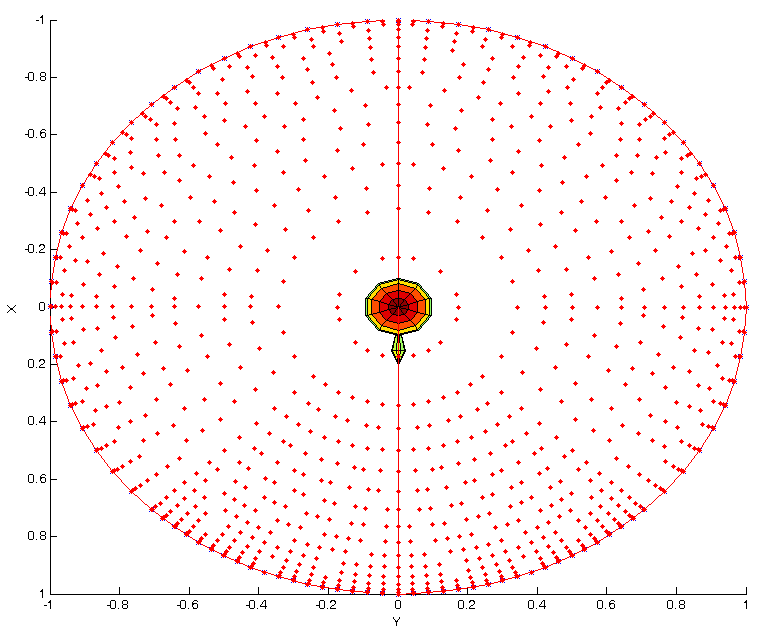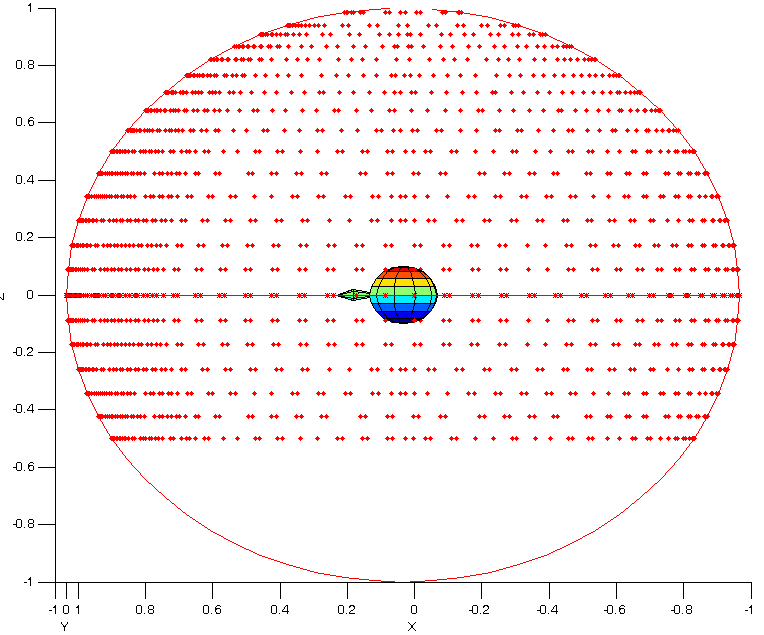Individual HRTFs were measured in a semi-anechoic chamber. Twenty-two loudspeakers (custom-made boxes with VIFA 10 BGS as drivers; the variation in the frequency response was ±4 dB in the range from 200 to 16000 Hz) were mounted at fixed elevations from -30° to 80°. They were driven by amplifiers adapted from Edirol MA-5D active loudspeaker systems. The loudspeakers and the arc were covered with acoustic damping material to reduce the intensity of reflections. The total harmonic distortion of the loudspeaker-amplifier systems was on average 0.19 % (at 63-dB SPL and 1 kHz). The subject was seated in the center of the arc and had in-ear-microphones (Sennheiser KE-4-211-2) placed in his/her ear canals. The microphones were connected via amplifiers (RDL FP-MP1) to the digital audio interface. A 1728.8-ms exponential frequency sweep beginning at 50 Hz and ending at 20 kHz was used to measure each HRTF. The HRTFs were measured for one azimuth and several elevations at once by playing the sweeps and recording the signals at the microphones. Then the subject was rotated by 2.5° to measure HRTFs for the next azimuth. In the horizontal interaural plane, the HRTFs were measured with 2.5° spacing within the azimuth range of ± 45° and with 5° spacing outside this range. The positions of the HRTFs were distributed with a constant spherical angle, which means that the number of measured HRTFs in a horizontal plane decreased with increasing elevation. For example, at the elevation of 80°, only 18 HRTFs were measured. In total, 1550 HRTFs were measured for each listener. To decrease the total time required to measure the HRTFs, the multiple exponential sweep method (MESM) was applied (Majdak et al., 2007, JAES). This method allows for a subsequent sweep to be played before the end of a previous sweep, but still reconstructs HRTFs without artifacts. The MESM uses two mechanisms, interleaving and overlapping and both depend on the acoustic measurement conditions (for more details see Majdak et al., 2007). Our facilities allowed the interleaving of three sweeps and overlapping of eight groups of the interleaved sweeps. During the HRTF measurement, the head position and orientation were monitored with the same tracker as used in the experiments. If the head was outside the valid range, the measurements for that particular azimuth were repeated immediately. The valid ranges were set to 2.5 cm for the position, 2.5° for the azimuth, and 5° for the elevation and roll. On average, measurements for three azimuths were repeated per subject and the measurement procedure lasted for approximately 20 minutes. Equipment transfer functions were measured. They were derived from a reference measurement in which the in-ear microphones were placed in the center of the arc and the room impulse response was measured for all loudspeakers. The room impulse responses showed a reverberation time of approximately 55 ms. The level of the largest reflection (floor reflection) was at least 20 dB below the level of the direct sound and delayed by at least 6.9 ms. The equipment transfer functions were cepstrally smoothed and their phase spectrum was set to the minimum phase. The resulting minimum-phase equipment transfer functions were removed from the HRTFs by spectral division. We assume that after this equalization, the room reflections and the equipment had only a negligible effect on the fidelity of HRTFs.
Directional transfer functions (DTFs) were calculated using a method similar to the procedure of Middlebrooks (1999). The magnitude of the common transfer function (CTF) was calculated by averaging the log-amplitude spectra of all HRTFs for each subject. The phase spectrum of the CTF was set to the minimum phase corresponding to the amplitude spectrum of the CTF. The DTFs were the result of filtering the HRTFs with the inverse complex CTF. Finally, the impulse responses of all DTFs were windowed with an asymmetric Tukey window (fade in of 0.25 ms and fade out of 1 ms) to a 5.33-ms duration.
Measurements are done with AMTatARI, a software based on the ExpSuite framework developed in our institute.

